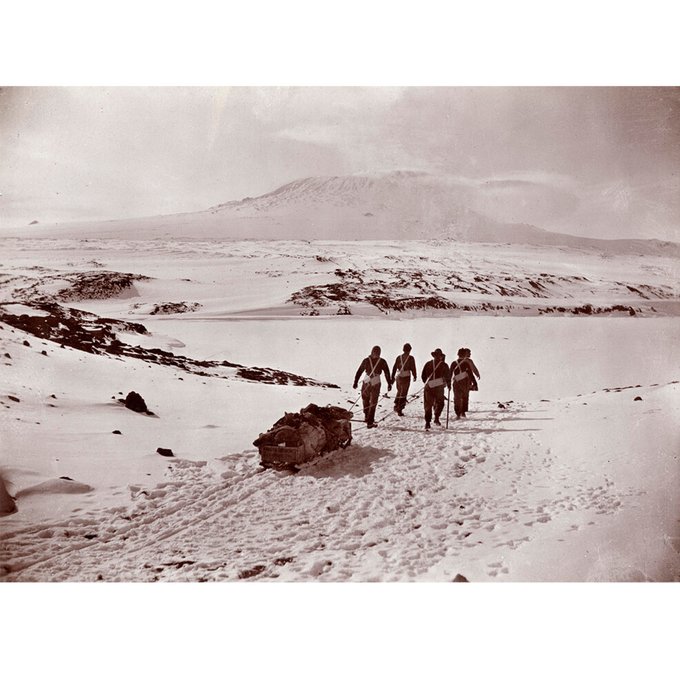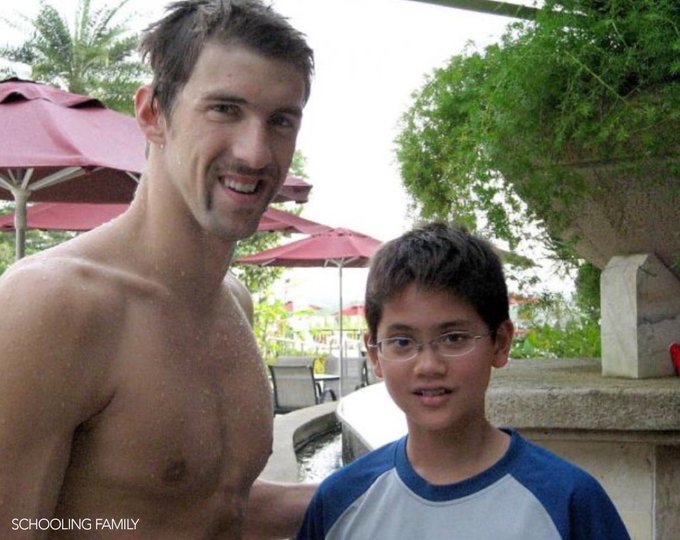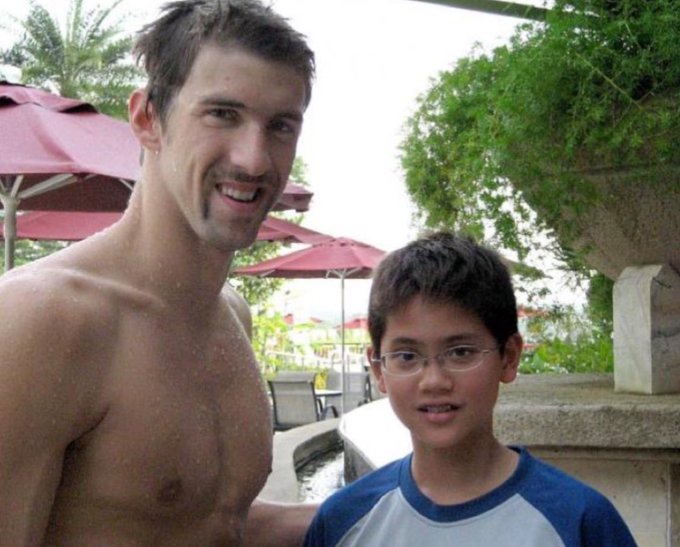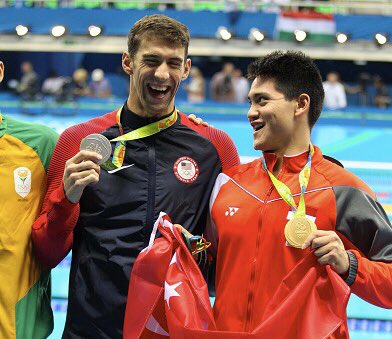Making your dreams a reality can seem impossible at times. Staying motivated in the face of failures and seemingly insurmountable odds is no easy thing. But some of the world’s most successful people had to persevere through countless failures before they finally broke through to success. From a former slave-turned-congressman to the homeless man who became a millionaire, plus a sprinkling of hugely-inspirational celebrities, here’s some solid proof you should never give up.
Sir James Dyson And The Vaccum Cleaner
It’s one thing to withstand failure 5 or 10 times on a project, but 5,126 times? That takes some serious perseverance, which is something the inventor of the Dyson vacuum cleaner has in abundance! After Sir James Dyson came up with the idea for a dual-cyclone bagless vacuum cleaner, he spent 15 years creating 5,126 failed prototypes before he got it right.
But when he finally perfected this bright-pink, bagless machine, distributors and manufacturers in Dyson’s home of the UK refused to touch it for fear of destroying the single-use vacuum-bag industry. But to Dyson, having persevered through thousands of prototypes, this minor hitch was no big deal. He began selling his vacuum cleaners in Japan to great success, and used the money to establish his own manufacturing company. Now, Dyson Ltd. is a multi-billion-dollar company and James Dyson is one of UK’s richest men. In interviews, Dyson has shared his view that failure is part of progress and innovation, and stresses that, in business and life, you learn much more from failure than you do from success. And if anyone would know about that, it’s Mr. 5,126!
Madam C.J. Walker
In 1867, Sarah Breedlove was born to a family of former slaves-turned-sharecroppers on a plantation in Louisiana. Orphaned aged 7, Sarah remained living and working in the cotton fields with her older sister until she was 14, when she married her first husband, Moses McWilliams. He died in 1887, leaving Sarah to raise their two-year-old daughter alone.
After her second marriage ended in divorce, Sarah started struggling financially and losing her hair. But things began to change for the better, not least the health of Sarah’s hair, when she took a job selling hair-stimulant products for African American entrepreneur Annie Turnbo Malone. Sarah soon became one of Malone’s highest-performing saleswomen, and grew inspired to utilize her newfound expertise.
After she married advertiser Charles Joseph Walker, Sarah began calling herself “
Madame C.J. Walker” and launched her own line of hair products for black women. Together, Sarah and her husband established a door-to-door and mail-order business, and with the combination of Sarah’s cosmetic expertise and Charles’ marketing abilities, they soon found overwhelming success. Sarah eventually moved to Indianapolis, where she built a factory, hair salon, laboratory, and even a beauty school, where she trained her ever-growing network of salespeople. Having started life with nothing, Sarah eventually became someone now widely-regarded to be the first black female millionaire in America.

But with the obstacles she faced ever-present in her memory, she made it her mission to share her success. She donated generously to scholarships for women, to the National Association for the Advancement of Colored People and countless other opportunity, creating causes. All in the hope that her good fortune might help provide a much-needed step-up to success for people who, like her, the odds were stacked so heavily against.
Stephen Hawking
Stephen Hawking was born on January 8th, 1942, 300 years to the day after astronomer Galileo Galilei died; a fact he kept close to heart as inspiration along his path. Physics and cosmology were Hawking’s passions, and with his natural abilities gaining him an Oxford education aged only 17, a career in those fields seemed almost inevitable.
But at just 21, Hawking was diagnosed with
Lou Gehrig’s disease, an illness that gradually paralyzes its sufferers. His doctors didn’t expect him to live beyond 23. But Hawking was as much of a phenomenon as the cosmological marvels he sought to explain. Overcoming the physical obstacles, as well as the deep depression his disease triggered, Hawking would live another 55 years, revolutionizing humanity’s understanding of the universe in the process. It wasn’t easy, though, as his disease gradually took away his mobility and speech, and soon after his diagnosis he was wheelchair-bound. On top of that, a serious case of pneumonia in 1985 left Hawking unable to speak, and for the rest of his life he relied on what became his trademark speech-generating device.
Stephen Hawking - How is he talking? by Moxieminer Despite all these obstacles, he persisted. He continued his research, gave university lectures, won awards, and gradually became one of the most highly-regarded scientific figures of the 20th and 21st centuries. His 1998 book, A Brief History of Time, became an instant bestseller, and presented complex ideas about the universe in a way that non-experts could engage with.
Hawking passed away in March 2018, but his legacy will live on as long as humanity’s curiosity about the universe exists. If you’re looking for proof of what can be achieved if you just keep going, there are few better examples than Stephen Hawking.
Sylvester Stallone
Now known worldwide as the creator of “Rocky”, Sylvester Stallone had a rough start, right from the day he was born. Due to complications during his birth involving the incorrect use of forceps, a facial nerve was severed, causing paralysis of parts of his face.
Though this would eventually prove responsible for the distinctive facial expressions and slurred speech he’s now loved for, as a young man, it wasn’t such a positive. Receiving mockery for his facial paralysis, Stallone would often end up in fights. As a result, he was expelled from multiple schools, and struggled academically. As a young man, while attempting to launch his acting career, he struggled to make ends meet to such an extent that at one point he was homeless for almost 3 weeks. During this period of his life, Stallone has stated that he was so poor, he was forced to sell his dog, Butkus, for $50.
But that’s not all. Times were so desperate that he took a role in a soft-core adult movie, receiving $200 for the trouble. Apparently, they don’t call him the Italian Stallion for nothing!
Aside from this, Stallone’s early twenties passed by with few notable roles to his name, leaving him on the brink of quitting acting altogether. But inspiration struck on March 24th, 1975, when Stallone watched a boxing match between Muhammad Ali and Chuck Wepner. He went home and wrote the script for Rocky in just 3 days, intending to sell it and play the lead. The script was rejected many times, partially due to Stallone’s insistence that he play the lead himself. Studios didn’t want to take a chance on a newcomer, but he refused to give up his vision.

Eventually, Chartoff-Winkler Productions agreed to let him play the lead, albeit on a small budget. When Rocky was finally released, it was a stellar success, winning 3 Academy Awards including Best Picture and Best Directing. 5 sequels and 2 Creed spin-off movies later, the series has grossed over $1.6 billion total worldwide at the box office. Plus, you’ll be pleased to hear Stallone used some of the money to get his dog Butkus back. In the wake of
his hard-earned success, Stallone went from dirt-poor to a movie star with countless blockbuster movies under his belt, including the Rambo series.
Jonas Hanway's Umbrella
In the early 1750s, Englishman Jonas Hanway returned home from a trip to France, only to be met with verbal abuse as he walked the streets of London. The reason for this heckling? He was carrying an umbrella.
Sounds ridiculous but in the mid-18th-century, the British public felt umbrellas were too effeminate and a symbol of weakness. To use the exact terms of the day, they were “too French”. Instead, when it rained, people were expected to either get wet, or to take a ride in a horse-drawn cab. So, when Hanway waltzed along with his nifty accessory, he was fiercely ridiculed, especially by coach drivers who viewed umbrellas as a threat to their income. On one occasion, one such cab driver tried to run Hanway over, and Hanway retaliated by using his umbrella to “give the man a good thrashing.”
Despite all this, Hanway paid no mind to the ridicule. By the time he died in 1786, the use of umbrellas was becoming increasingly common across England.
He was a pioneer, and a very dry one at that. So, if your latest fashion choice is raising a few eyebrows, just give the public a few years. Assuming it’s not a genuinely terrible idea, it may well catch on.
The Shackleton Expedition
Irish explorer Ernest Shackleton had a big dream: to pioneer bold expeditions to the unexplored reaches of Antarctica. Even in 2020, this remains a treacherous dream to achieve, but in the early 1900s, it was borderline insanity.
On his first venture, in 1901, Shackleton led a successful journey into vast stretches of previously-unexplored terrain. Unfortunately, the intensity of the weather and complications along the journey left Shackleton seriously ill, and he was forced to return home unsatisfied with the expedition. In 1907, he tried again, successfully discovering the location of the South Magnetic Pole, and overseeing the first ever ascent of Mount Erebus, the southernmost active volcano on Earth.
But it still wasn’t enough. Shackleton made a third attempt in December 1914 on a ship fittingly named “Endurance”, on an expedition that would test his perseverance to a degree he never could’ve imagined. In January 1915, Shackleton and his 27-man crew were forced to abandon the ship when it became trapped in Antarctic sea ice hundreds of miles from solid ground. With 3 lifeboats, they took the treacherous 346-mile journey, skirting between colossal chunks of ice, from their abandoned boat to the uninhabited Elephant Island. From there, Shackleton and 5 of his men made another arduous 720-nautical-mile-long journey to South Georgia Island to seek a rescue party for the others. On their tiny lifeboat, battling hurricane-force winds, it took 15 days to reach the island, followed by a treacherous 36-hour trek across mountainous terrain to reach South Georgia’s whaling station.

But thanks to Shackleton’s leadership and unwavering perseverance, they made it, and ships were dispatched to rescue the others from Elephant Island. Miraculously, Shackleton’s entire crew survived, proving that, in a situation like that, not giving up is the difference between life and death.
Jarret Adams: Wrongfully Imprisoned
In 1998, while he was preparing to head off to junior college, 17-year-old Jarrett Adams was wrongfully convicted of a crime he didn’t commit. Unable to afford legal assistance, he was assigned a court-appointed attorney, whose incompetence in what should’ve been an easily-disproven case ended with Adams being sentenced to 28 years in prison.
While inside, however, Jarrett began reading law books, and soon realized he’d been deprived of his Constitutional right to be provided with effective counsel. He contacted Keith Findley, an attorney with the Wisconsin Innocence Project, an organization dedicated to overturning wrongful convictions within the state. After 10 years of fighting an uphill battle, Adams was finally freed in 2007. But his story doesn’t end there. Adams then earned himself a law degree, and in 2016, became the first Innocence Project exoneree to be hired as a lawyer by the organization.
Now, Adams has committed his life to helping others in the same situation he faced. Despite experiencing seemingly-unbeatable injustice, not only did
Jarrett Adams not give up; he turned his life’s biggest disaster into the source of his biggest successes.
Joseph Schooling And Michael Phelps
They say you should never meet your idols, but they don’t say much about beating them. In 2009, when Singaporean swimmer Joseph Schooling was 13 years old, he snapped the picture below with Olympic legend Michael Phelps.
Schooling was star-struck when his hero paid a visit to the swimming club he trained at, and the meeting’s impact on Schooling was enormous. Inspired by his idol, Joseph dived head-first into the relentless, extreme physical training necessary to meet Olympic standards. Over the next 8 years, Schooling made his dream a reality, and in 2016, he finally made it to the Olympics. There, he not only won the first ever Olympic gold medal for his country; he did so while also beating Michael Phelps in the men’s 100m butterfly final! Despite being disappointed not to snag the gold against Schooling, Phelps confessed he was proud of the Singaporean, who’d worked so hard and come so far since their first meeting. Schooling credited Phelps for his success, though without his own perseverance on the road to matching and
exceeding his idol’s skill, this heart-warming story may never have happened.
Colonel Sanders
You’d probably never think that a piece of fried chicken could inspire you to keep going in the face of great difficulty. Well, unless it was really tasty. But in the case of KFC, the inspiration comes from the origin story, not just the flavor. The Colonel Sanders we see immortalized on our family buckets today had an extremely tough life on the road to success.
Born Harland Sanders in 1890 in Henryville, Indiana, his father died when he was five, leaving his mom as sole breadwinner. As the eldest child, Sanders took care of the home and learned to cook, before taking his first job at 10 years old as a farmhand.
The early working years that followed were filled with failure after failure as he struggled to hold down jobs as a laborer, an insurance salesman, and steam train engine stoker, among countless others. As he moved into his 30s and 40s, things only got harder for Sanders. Ill-fated ventures seemed to come one after another, including managing a service station that was forced to close by the Great Depression. As these failures mounted, Sander’s wife left him, and when his 20-year-old son died from a tonsil infection in 1932, he was thrown into a depression. But he wasn’t defeated. He began running another service station, this time selling hot meals, including his now-famous fried chicken.

As word spread about his tasty cooking, Sanders opened a restaurant and began trying to franchise his chicken recipe to restaurants around the USA in exchange for a percentage of revenue. After he remarried in 1949, he and his second wife traveled the country, often living out of Sanders’ car, attempting to garner interest in his recipe, now officially-branded as Kentucky Fried Chicken. During this time, money was so tight that, as their savings dwindled, they depended heavily on the kindness of friends and strangers just to survive. Sanders’ “secret recipe” was
rejected over 1,000 times before anyone agreed to franchise it, but once success finally came, albeit in Sanders’ mid-60s, it came fast, and never stopped.
When he died, aged 90, there were around 6,000 KFC locations in 48 countries. Now there are over 24,000 restaurants in over 145 countries. If you ever need proof that it’s never too late to succeed, just remember the story of the white-haired fellow still smiling down on streets across the world.
Homeless Man Becomes A Millionaire
Australian Harry Sanders always had a knack for technology. He established a search engine optimization agency in 2015 at just 17 years old, but limited financial resources soon saw it go belly-up.
Sapped of every penny, and with a complicated family life, he soon found himself homeless on the streets of Melbourne. He spent this time alternating between couch-surfing at friends’ houses, and living on the streets, even sleeping under a bridge for a short while.
Despite his situation, Harry hustled hard, and slowly made it back onto his feet, eventually being able to secure a tiny box apartment to live and work out of. Working 100-hour weeks as a freelance search engine optimizer, he was able to secure clients and employees alike. By the end of 2019, Harry had gone from being homeless to being a millionaire, with his company, StudioHawk, earning $3 million in revenue that year. This came after he’d become the youngest ever recipient of an online marketing industry award for Young Search Professional in 2018, at just 21 years old.
And as if in symbolic proof of
his amazing resilience, he accepted the award while sporting head stitches after getting hit by a car two days before! At the school of hard knocks, Harry Sanders is top of the class, with honors.
Michael Jordan
Everyone knows the name Michael Jordan, even non-basketball fans. But many people don’t realize that when this basketball legend tried out for the varsity basketball team at his high school, he didn’t make the cut.

Like any teenager with big sporting dreams, realizing his name wasn’t posted up on the team-sheet devastated him. But he didn’t give up. In fact, he fought harder. Over the course of a year, he gave everything to become the best player he could be, and with a little help from a four-inch growth-spurt, he eventually made the team. From there, it wasn’t long before he hit the big leagues, joining the NBA in 1984, aged 21. Becoming a sporting icon, he continued to turn failures into wins by learning from each one and doubling down on his efforts. Jordan summed up his approach to failure in his own words, saying, "I've missed more than 9,000 shots in my career. I've lost almost 300 games. Twenty-six times, I've been trusted to take the game-winning shot and missed. I've failed over and over and over again in my life. And that is why I succeed."
Like other masters of perseverance, Jordan’s secret was getting up each time he was knocked down. Doing so, he played 15 seasons in the NBA, won 6 championships with the Chicago Bulls, and inspired generations of kids to play basketball. All that after being rejected from his high school team, you can call that a slam dunk.
Josiah Walls: Slave Turned Senator
The path of Josiah Walls’ life was one of unbelievable changes. Born into slavery in Virginia in 1842, Walls was forced to fight, against his own interests, for the confederacy during the Civil War, until Union soldiers captured him and set him free in 1862.
He then started working at a sawmill and as a teacher, and before long, he’d saved enough money to buy a 60-acre plantation that had once belonged to a confederate general. With his newfound wealth and influence, Walls began making his way into politics and served terms in the Florida state senate. But as a former slave, politics wasn’t all sunshine and roses for Walls. While campaigning against ex-slave-owner Silas Niblack for a US House of representatives’ seat, Walls narrowly avoided an assassination attempt when a bullet whizzed past his head at a rally.
Amazingly, though, Walls was unphased, and went on to serve 3 terms in which he advocated for infrastructure upgrades and public education, including equal access to education for blacks.
He was the only black representative for Florida until the early 1990s, and he achieved his position through total, unyielding fearlessness, even in the face of life-threatening danger. Going from
slave to senator, now that’s a quality-of-life upgrade!
Shaquem Griffin
When Shaquem Griffin was born, his left hand was severely malformed, due to a something known as amniotic band syndrome. This disorder occurs when strands of material form inside the womb and wrap around a baby’s extremities, constricting them.
This results in almost-constant agony for affected children, and in Griffin’s case, the only treatment was to amputate his hand at 4 years old. Despite only having one hand, however, Griffin was determined to play football, and his natural gifts for the game outshone any limitations imposed by his disability.
He worked tirelessly to prove his skill, and it paid off when he received an offer for a sports scholarship at the University of Central Florida. Continuing to impress, in 2018, Shaquem received an invitation to the 2018 NFL Draft and signed a 4-year, $2.8 million deal with the Seattle Seahawks. Along the way, he also set a new record for running the 40-yard dash in 4.38 seconds. To not only make it pro, but also set records along the way, is a testament to Shaquem Griffin’s phenomenal, unstoppable drive in the face of seemingly-insurmountable odds.
If Griffin can manage all that, that promotion you’ve been waiting for, or even a new personal best at the gym doesn’t seem quite so out of reach, does it? Whatever obstacle you’re facing, don’t give up. You’ve got this. If you were amazed at these uplifting motivational stories, you might want to read about stories proving you should
never give up. Thanks for reading!

































